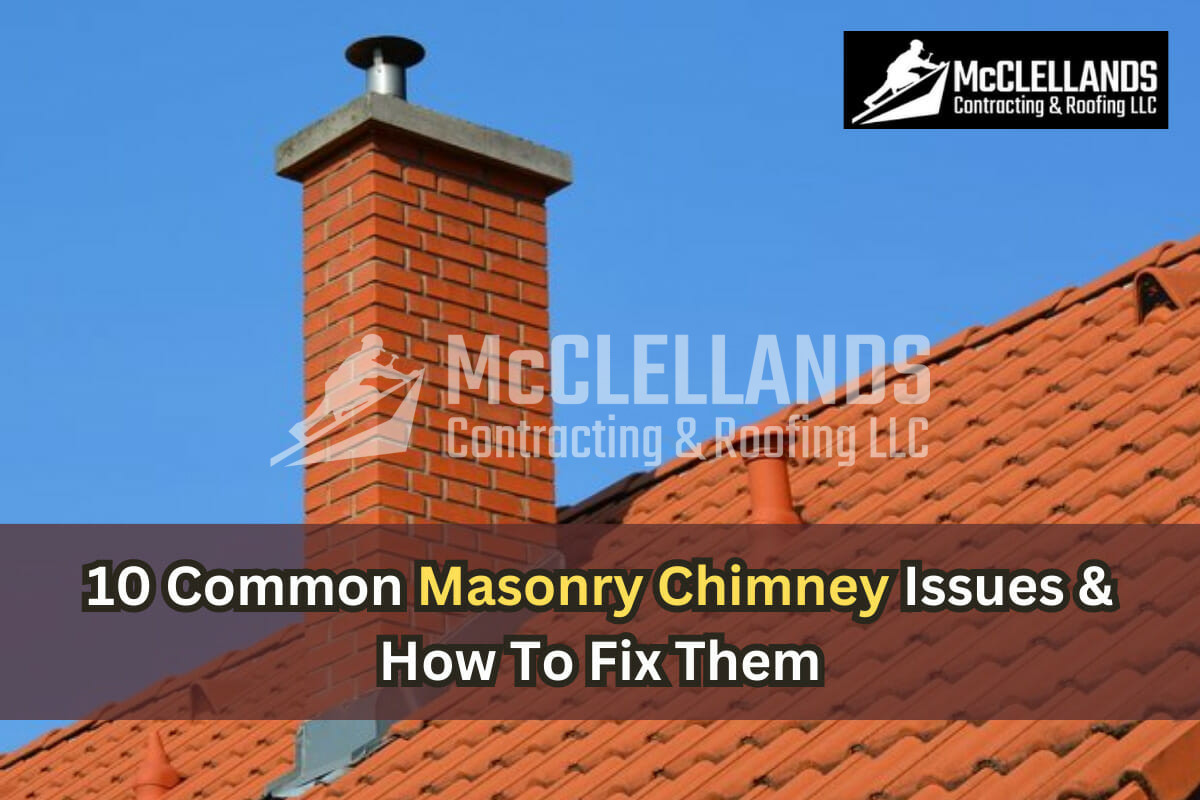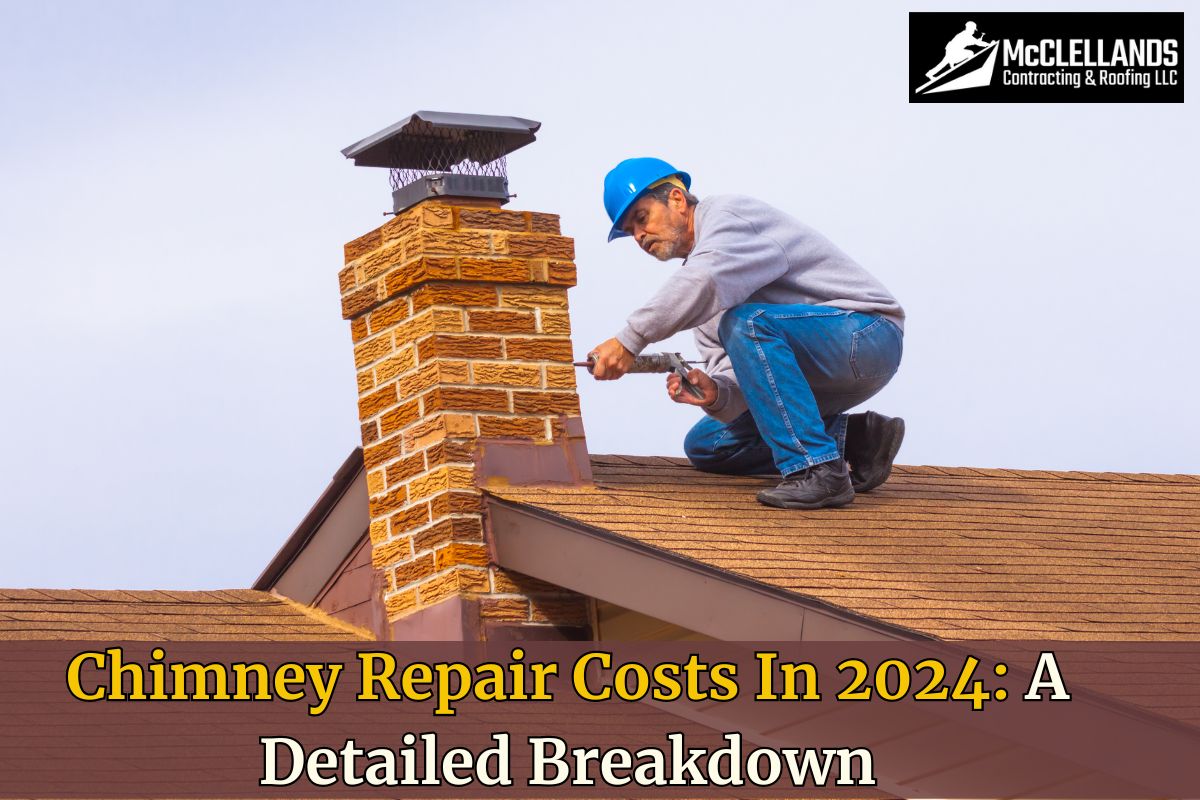Are you concerned about cracks occurring in your masonry chimney? Wondering how to tackle them effectively? Look no further! In this must-read blog post, we unveil the 10 most common chimney cracks and other issues to look out for. We will also provide you with invaluable solutions to restore your chimney's strength. Ready to conquer those problems once and for all? Let's dive in!
1. Vertical Cracks
You've probably noticed those unsightly vertical cracks on your chimney. But remember, they're not just an eyesore – they could be a potential hazard if left untreated.
Vertical cracks are often caused by vertical movement in the chimney structure, which can result from foundation issues or the natural settling of the building. To prevent further damage and ensure the safety of your home, it's crucial to address these structural concerns promptly.
Fix Vertical Cracks
When addressing vertical masonry chimney cracks, material selection is essential for proper crack prevention and sealing techniques. Choose a flexible sealant designed specifically for masonry applications to accommodate any future movement without compromising the integrity of the repair.
Be sure to clean and prepare the area before applying the sealant or filler material to ensure proper adhesion and long-lasting results. If these cracks were caused by foundation issues, it may be necessary to consult with chimney repair pros who can assess your situation and recommend appropriate measures to stabilize your home.
2. Horizontal Cracks
It's alarming when horizontal cracks appear in your chimney, but don't worry – there are solutions to repair and reinforce the structure.
One of the main causes of horizontal cracks is thermal expansion and contraction combined with moisture penetration from freeze-thaw cycles. To prevent these types of cracks, ensure that your chimney has proper expansion joints to allow for movement in the masonry, which can help alleviate stress on the structure. Additionally, providing adequate structural support through metal brackets or reinforcement bars can help minimize cracking due to excessive loads or lateral pressure.
How To Fix Horizontal Cracks
When addressing existing horizontal cracks, it's essential to monitor their size and pattern over time. You can use caulk or mortar repair products to fill small gaps and prevent further water infiltration. But if the issues are severe, then it is better to seek professional assistance.
Remember that early detection and intervention are crucial in maintaining the safety and longevity of your masonry chimney.
3. Stair-Step Cracks
These types of cracks typically occur when there is uneven settling or movement within the chimney's foundation, causing bricks to crack and separate along mortar joints. These cracks typically follow the pattern of the bricks and appear in a zig-zag.
How To Repair Stair-Step Cracks
To repair stair-step cracks, you'll need to stabilize the foundation, replace any cracked bricks, and reinforce the masonry with proper techniques. Masonry reinforcement can be achieved by using steel lintels or rebar for added strength.
Applying chimney sealants can also help prevent moisture infiltration that could lead to additional cracking and deterioration over time.
In some cases, stair-step cracks may also indicate larger issues with your home's foundation that require professional attention. To tackle this issue effectively, consider consulting a structural engineer who can assess your home's overall stability and recommend appropriate measures such as stabilizing foundations or installing support beams if necessary.
4. Crown Cracks
Crown cracks occur on the very top of the chimney, otherwise known as the crown, as they can lead to serious structural damage if not promptly addressed and repaired. These types of cracks often occur due to the crown's constant exposure to harsh weather conditions, temperature fluctuations, and moisture penetration.
Fix The Issue Promptly
To address crown cracks effectively, consider these essential steps:
Crown Sealant:
- Use flexible elastomeric sealants that expand and contract with temperature changes
- Opt for waterproofing sealants specifically designed for chimney crowns
Waterproofing Techniques:
- Apply a water-repellent coating on the entire surface of the chimney
- Ensure proper flashing installation around the chimney base to prevent water intrusion
Watch For Expanding Cracks:
- Monitor any existing small cracks regularly
- If a crack expands or a new one forms, consult a professional for immediate repair
5. Spalling
This common masonry chimney problem occurs when moisture damage and freeze-thaw cycles cause the outer layers of brick or stone to flake off, leading to deterioration.
How To Fix Spalling
To prevent spalling from happening in the first place, make sure you're using top-quality materials during construction and employing proper repointing techniques. Additionally, applying protective sealants designed for masonry surfaces will help keep out unwanted moisture and extend the life of your chimney.
When you face existing spalling issues, it's important to address them promptly to avoid further damage.
- Start by removing any loose or damaged bricks and clean the affected area thoroughly.
- Carefully select replacement materials that match the original as closely as possible in terms of size, color, and texture.
- Install these new bricks or stones with skilled repointing techniques. This not only ensures a tight fit but also helps maintain the integrity of your chimney structure.
6. Efflorescence
While spalling can cause significant damage to your chimney, another issue you may encounter is efflorescence. This problem occurs when moisture within the chimney evaporates and leaves behind salt deposits, leading to unsightly white stains on your chimney's surface.
Efflorescence is not only an aesthetic concern but also an indication of excessive moisture in the structure that could lead to more severe problems if left unaddressed. To combat efflorescence, it's crucial first to identify and eliminate moisture sources contributing to the issue.
How To Tackle Efflorescence
When it comes to cleaning techniques for existing efflorescence deposits, apply gentle methods such as dry brushing or using a mild detergent solution, as harsh chemicals can damage the masonry further. Keep an eye on your chimney's condition as simply cleaning the signs of efflorescence won’t solve the underlying issue, and address any signs of excess moisture to prevent it from becoming a recurring problem.
7. Chimney Leaning
You might not realize it, but a leaning chimney could pose serious hazards to your home and should be addressed promptly to ensure the safety of your fireplace system. The cause of a leaning chimney often stems from issues with the foundation of your home, the chimney being poorly constructed, or damage to the masonry.
To tackle this problem effectively, you should consider implementing several preventive measures such as:
- Chimney tilt prevention: Regularly inspect your chimney for signs of tilting or leaning to catch issues early before they become severe.
- Foundation assessment: A professional inspection of the foundation supporting your chimney can identify any weaknesses that need reinforcement or repair.
- Soil stabilization: Ensure that the soil around your home is stable and well-drained. This can minimize shifts in the ground that contribute to structural problems.
- Structural supports: Installing additional supports like chimney braces can help provide stability and reduce the risk of further damage.
8. Chimney Cap Damage
The cap is an essential component of your chimney system, as it helps to protect the interior from water intrusion, pests, and debris.
Unfortunately, over time, chimney caps can become damaged or rusted, leading to compromised performance and potential issues within your home.
To fix a damaged chimney cap, consider investing in a high-quality cap replacement that offers waterproofing and rust prevention features. Also, look into options with built-in guards to keep out pests and debris.
9. Damaged Flue Tiles
The flue liner is made up of clay tiles, and damage to these tiles can lead to serious issues such as flue deterioration and even dangerous carbon monoxide leaks in your home.
Flue tiles play a crucial role in protecting the masonry chimney structure from high temperatures and corrosive byproducts produced during combustion. When these tiles become cracked or broken, it compromises the safety and efficiency of your entire chimney system.
How To Address Damaged Flue Tiles
You may notice flue tile damage when you find bits of broken tile within your fireplace. When you see this, address damaged flue tiles promptly to prevent further damage or risks to your home. Tile replacement is often necessary if the cracks are extensive or if multiple tiles are affected. This process involves removing the old, damaged tile and installing a new one that fits securely within the existing chimney structure.
10. Mortar Joint Damage
What's the deal with mortar joint damage? Mortar deterioration is a common issue in masonry chimneys and can be caused by various factors such as weathering, moisture intrusion, or even incorrect mortar composition.
Damaged mortar joints not only compromise the integrity of your chimney but also pose a safety hazard for your home.
How To Fix Mortar Joint Damage
One effective solution is using lime-based mortar for its excellent performance in terms of durability and compatibility with historic masonry materials. Lime-based mortars provide impressive bond strength while being flexible enough to accommodate minor structural movements without cracking.
Chimney Rebuilding and Restoration
When it's necessary to go beyond simple repairs, complete chimney rebuilding, and restoration might be the best solution for ensuring your home's safety and maintaining its aesthetic appeal.
Chimney rebuilding and restoration involves selecting suitable materials, applying waterproofing solutions, and employing restoration techniques like new chimney liners, insulation, and repairs.
Working with an experienced professional is crucial for assessing the chimney's condition, recommending repair options, and using proper techniques and materials. This comprehensive approach ensures structural integrity, appearance, and protection against future issues.
Are You Looking To Repair Your Chimney Or Roof?
If you are looking for professional assistance to help you repair your chimney or your roof, then you are in the right place. Call McClellands Contracting and Roofing at (412) 353-5660 and hire the top roofers to work on your home exterior and roof.




